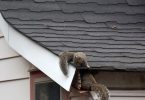CBD is one of the most important constituents of hemp and cannabis. In fact, these are two strains belonging to the same plant species. This derivative has remarkable anti-inflammatory, sedative, antiseptic and neurorestorative properties, making it one of the most researched compounds recently.
There are many products on the market that contain CBD to a greater or lesser extent. The conversion of the active substance certainly impacts the effect of these products. The method of ingestion and your health condition also matters.
If you want to benefit from nothing but pure cannabidiol, isolates might be your thing. Making these products is labor-intensive, and not all manufacturers can do that. So for all those wondering how to make CBD isolate for yourself, it could be in vain, as you probably don’t have the proper equipment.
Contents
Step One: Extraction
CBD isolate is produced by the cannabidiols that are present in hemp. These plants are grown under controlled conditions to ensure the optimal quality of the raw material. Different strains contain different amounts of this compound, but other valuable matters including flavonoids, terpenes, THC, fiber, healthy fats, etc. All these can add up to the potency of hemp products, but none of them is found in isolates.
Although the altogether effect of all mentioned compounds (also known as the entourage effect) is a great thing, manufacturers decided to isolate CBD. The main reason was a desire to make a completely safe, non-psychoactive, and effective product.
It all starts with quality, CBD-rich plant material. The extraction process involves devices called extractors. These machines act like centrifuges, mixing raw material with a solvent, usually propane, butane, or ethanol. It washes out all useful things from hemp, resulting in an oily solution that has nothing to do with an isolate. So it needs further purification.
Step Two: Winterization
The next step is winterization, also known as an alcohol wash. It serves to remove fats, oils, chlorophyll, and all those greasy things from the extract. Leaving them can decrease the quality of the final product, as some waxes can be potentially harmful.
Manufacturers use specialized vessels for this process. Inside, the extract is mixed with alcohol, usually ethanol, and then heated just long enough for the CBD molecules to wake up. After reaching the temperature, the mixture is frozen for the next 24 hours. Below remains a thick, purified oil known as miscella.
After 24 hours, miscella should be filtered. Manufacturers usually use a filter press along with a vacuum pump to do the filtration fast. After passing through a series of vessels, miscella is almost completely free of the greasy layer.
The reason for removing waxes and fats from CBD isolate is because these can build up in the lungs. In the long run, that could potentially harm your health. Still, there are not enough studies on the harmful effects of inhaling unpurified isolates. But just in case, use only winterized isolates.
Step Three: Decarboxylation
Decarboxylation is nothing but heating of miscella to ‘wake’ cannabidiol molecules, i.e., turn them into an active form. Why that matters, find out at this source. This step is critical for achieving the full potency of CBD isolate. It does that by removing carboxylic acid and CO2 from the miscella.
If this process is done correctly, the resulting solution will be a highly potent CBD isolate. But if something goes wrong, for example, the required heating temperature is not reached, CO2 won’t be removed entirely. That will cause a problem in the next step, which is distillation.
Step Four: Distillation
Distillation is, in fact, just another purification of CBD extract but at a higher level. It’s a secondary extraction process carried out in special devices and with special techniques. Wiped film and short path methods are most commonly used. The second method is more suitable for the distillation of THC, while the first one is recommended for CBD.
Wiped film distillation apparatus consists of an inlet tank containing a rotating plate that is heated and another vessel with wipers. The miscella slowly drains from the inlet tank onto the plate. It heats up and moves to heated wipers that are constantly rotating. That creates vapors containing terpenes, volatiles, etc.
Then, recirculating fluid is released through the central tube, and so the vapors are returned to the liquid state. Unwanted matters go to one vessel, while a CBD isolate in liquid form remains in the collecting tank. Distillation is a slow process because the heating temperature should be controlled. At the same time, the liquid in the coil shouldn’t freeze.
Final Step: Crystallization
The final stage in the manufacturing process is CBD isolate crystallization. It combines heating and stirring at different speeds, and that results in crystal formation. This step is not mandatory, as some manufacturers sell CBD isolates in liquid form. Others can turn crystals into fine powder.
Solvents such as pentene are also used in this step. They serve to wash the crystals from impurities and residues for the last time. Purified isolates go into further production (cosmetics, edibles, oils) or directly to the market.
On the page below, see how you can use these crystals:
https://www.medicalnewstoday.com/articles/cbd-crystals
The process of making CBD isolates involves many steps. All of them should be done under professional supervision. That adds up costs to the entire production, and that’s the reason why quality isolates don’t come cheap. But when you compare that with what you get, you see why isolates are the best value for money.






